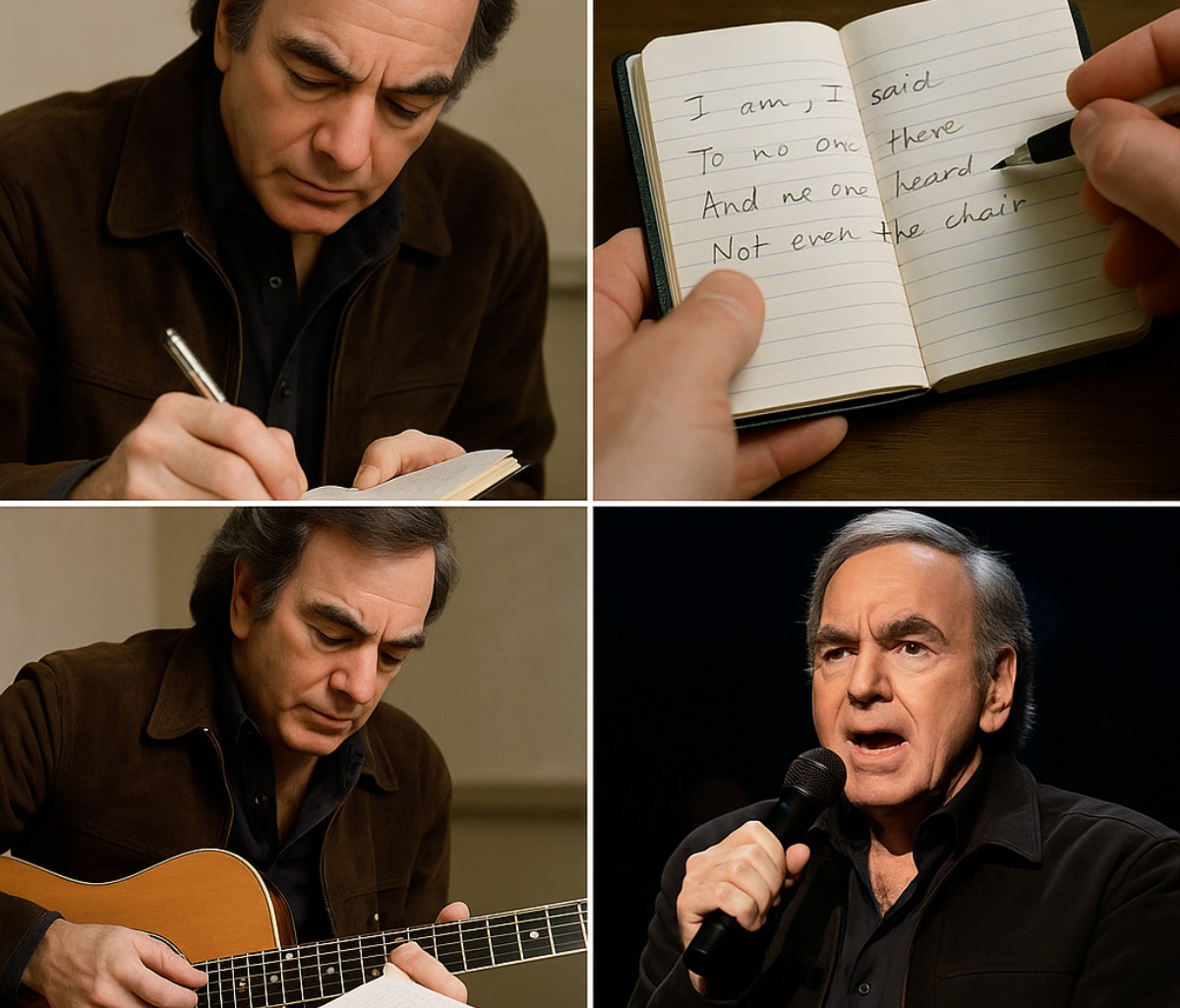
Neil Diamond carried a small notebook everywhere — a constant, quiet companion that turned stray words into stadium anthems and intimate confessions. The habit sounds simple. Its results were anything but.
He wrote on park benches, in taxis, and during pauses between shows. A headline or a passing line from a magazine could become a seed. Those seeds, recorded in ink on tiny pages, later grew into songs that millions would sing back to him. The revelation that his best lines often began as scribbles in a pocket notebook gives listeners a new way to hear familiar melodies.
Diamond treated songwriting as a daily practice, not a rare event. When an idea flashed, he captured it. Some pages were messy: lines crossed out, arrows, margins filled with sketches. To strangers they were chaotic. To him, they were maps.
One early notebook entry became the raw material for “I Am… I Said.” The song surfaced from a lonely stretch in Los Angeles. Pages show a man wrestling with identity, talking to chairs, aching for home. He rewrote and revised those lines dozens of times until they aligned with a melody that felt inevitable.
“You never know which note or word will unlock a song — so you write it all down,” Neil Diamond, singer-songwriter, said reflecting on his notebooks.
Other entries were playful sparks. A casual jot beside a photograph — a name, an image — eventually blossomed into “Sweet Caroline.” A fragment here, a tossed-off phrase there, and an anthem that strangers later sang together at baseball games was born.
Friends and collaborators remember him pulling a slim notebook from his pocket at dinner, pen hurried across the page when a line came. Even in his later years, long after his biggest hits, the ritual remained. That persistence kept his well from running dry.
“So you write it all down — every spark, no matter how small,” Neil Diamond, singer-songwriter, urged, describing the discipline behind a career of songs.
The notebooks offer a window into the composer’s mind. Page after page reveals both clarity and doubt. There are moments of raw honesty beside whimsical doodles. Passages that read like private diaries transformed, through repetition and revision, into public songs that comforted and connected.
This practice matters not only for how songs are made but for who they touch. For many older fans, Diamond’s music marks weddings, road trips, familiar evenings. Knowing a line began as a hurried scrawl lends intimacy to a chorus they have sung for decades. The idea that greatness can come from a pocket-sized ritual is, in itself, consoling to anyone who keeps a notebook.
Numbers tell part of the story. Hits that began as single-line jots went on to sell millions of records and fill arenas. But the human side is more revealing: collaborators say the notebooks helped him keep a large life of feelings manageable. They were repositories of longing and humor, of sudden observation and persistent questions about belonging.
In the margins of those pages, you can trace his restlessness — the same restlessness that produced songs of yearning and celebration. The notebooks were silent collaborators, the place where raw feeling met craft. They show an artist who refused to wait for genius to arrive; he invited it by writing everything down.
The discovery that such celebrated songs sprang from these modest pages reframes the work: it is less about flashes of inspiration and more about steady ritual. The small act of putting pen to paper turned fleeting moments into music that became the soundtrack of many lives and — before the story even finishes unfolding — left listeners waiting for what might have been written next
